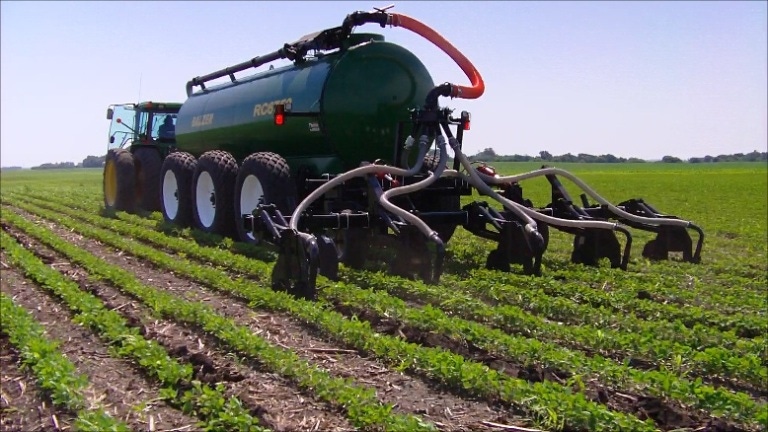Wet Weather Causes Manure Management Headaches
June 13, 2013

An extended period of wet weather this spring has led to manure management concerns for many midwestern livestock producers. Iowa State University (ISU) officials say manure storage has been a challenge this spring, and advise that the primary management goal should be to keep concentrated manure contained.
Open manure storage structures should be monitored closely to prevent over-topping. The over-topping of bermed earthen-storage ponds and lagoons could result in breaching and loss of the structures. Although concrete and steel structures are not in danger of breach failures, they should also have manure levels lowered if they are in danger of over-topping.
ISU experts say producers should transfer manure from full storage structures to alternative storages if available, as land application of manure during saturated conditions presents the risk of manure nutrient runoff into surface waters. If no alternative manure storage is available, producers should contact their local Department of Natural Resources (DNR) office to discuss emergency wet-weather land application options before allowing a storage tank or pond to overflow. If manure levels reach 1 ft. below the top of a concrete or steel structure, or within 2 ft. of the top of earthen berm structures, producers should contact their local DNR field offices.
Like what you’re reading? Subscribe to the Nutrient Management newsletter and get the latest news delivered to your inbox every month!
Wet soils will take in manure and water at a slower rate because much of their capacity to hold liquids is already used. Wet soils are prone to compaction and surface runoff. If emergency manure application is necessary, after notifying the DNR, ISU experts recommend hauling a few loads to lighter, well-drained soils that may support manure application equipment. Consider filling tankers to less than full capacity to limit weight. Avoid fields with a high risk of runoff or flooding, and apply to fields with flatter slopes and lower phosphorus index scores.
Because many areas in Iowa experienced delays in corn planting due to the wet soil conditions, ISU experts remind producers that fields that have had liquid manure applied at rates intended for growing corn can be switched to soybeans after June 1 with no penalty of over-application of manure nitrogen in the state. Producers should document the changes in the crop rotation, application methods and other changes in their annual manure management plan forms, prior to planting or making changes in application method.
Read about more tips for dealing with wet weather manure challenges at http://www.extension.iastate.edu/CropNews/2013/0529rieckhinzandersen.htm.
You might also like:
Tools to Help Deal with Climate Change
You May Also Like



